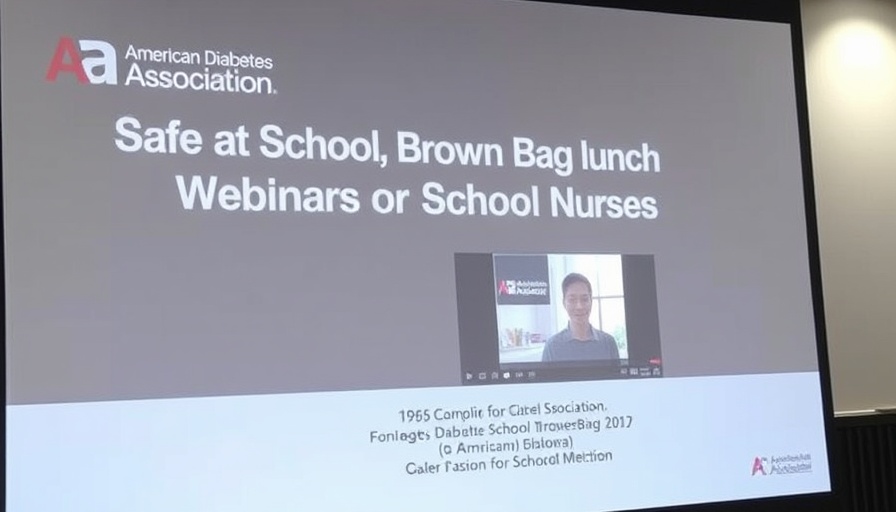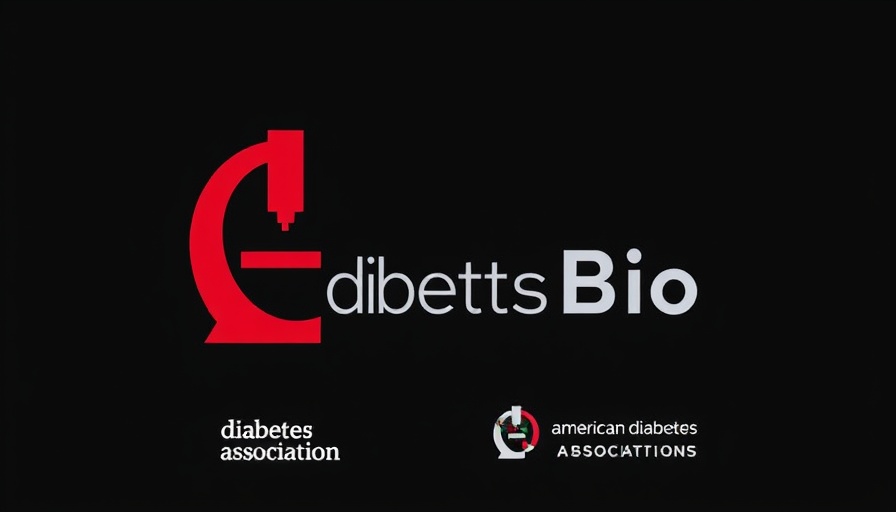
Understanding the Importance of Emergency Preparedness in Schools
In today's uncertain world, the significance of emergency preparedness in schools cannot be overstated, particularly when it comes to managing chronic health conditions such as diabetes. For diabetic students, ensuring proper care during emergencies like lockdowns or evacuations is paramount. As school nurses, we play a crucial role in not only administering daily medications but also in laying out a clear strategy for emergency situations that may disrupt access to vital supplies.
In 'School Lockdowns and Emergency Evacuation Best Practice', the discussion dives into the critical role of school nurses during emergencies, exploring insights that sparked deeper analysis on our end.
The Role of School Nurses in Emergency Preparedness
School nurses serve as the frontline defenders of student health. They are responsible for monitoring chronic conditions, including diabetes, and ensuring consistent care. In the wake of a crisis, the preparation and training provided by these professionals become critical. They can guide the entire school community on how to manage students' unique needs effectively even when faced with unforeseen circumstances.
Challenges Faced during Emergencies for Diabetic Students
Emergencies often come without warning, and diabetic students may find themselves without access to essential supplies such as glucose meters or emergency snacks. The unpredictability of emergencies can lead to hypoglycemic events, emphasizing the need for preemptive strategies. School staff, including substitute teachers, must be educated on diabetes management, knowing symptoms of low blood sugar, and having a clear action plan in place.
Training School Staff: A Necessary Component
Training staff to recognize and respond to the needs of diabetic students is an essential piece of the emergency preparedness puzzle. Building competence through regular drills and informative sessions related to diabetes care ensures that everyone in the school knows how to act, just as they would during a fire drill or severe weather alert.
Collaborating with Families for Comprehensive Care
The collaboration between school nurses, families, and healthcare providers can lead to a well-rounded emergency plan. Parents can provide essential insights and information that help tailor plans to the specific needs of their children. For example, ensuring students wear medical ID bracelets can significantly enhance the speed with which responders act.
Creating an Emergency Go-Bag: Preparing for Evacuations
Having an emergency go-bag filled with essential supplies is fundamental. This bag should include fast-acting carbohydrates, extra insulin, syringes, and glucose monitoring supplies, all critical for managing diabetes during a crisis. This proactive measure can streamline the evacuation process and minimize the potential for health threats during emergencies.
Utility of Drill Exercises
Regular drills help the school community practice their emergency response. The procedures should not only involve moving students safely but also address how to protect their medical needs during an emergency. Schools can simulate various scenarios, from a lockdown to a quick evacuation, to ensure that both staff and students feel prepared and confident.
Resource Awareness: Where to Turn for Help
Accessing vital resources, including the ADA's Safe at School initiative, offers up-to-date guidelines and support for schools managing diabetes. This database of resources can serve as a foundation for establishing and maintaining appropriate emergency plans.
Strategies for Effective Communication
Maintaining open lines of communication between families, healthcare providers, and school staff is paramount. Regular updates on health plans, medications, and individual needs create a synergy that can lead to more effective management of diabetes during emergencies. Ensure parents understand the procedures in place and feel free to relay any changes in their child’s condition that could affect their care.
Conclusion
Emergency preparedness for diabetic students is a multifaceted endeavor that requires the collaboration of school nurses, staff, and parents to ensure that every student's health needs are met, even in the most chaotic circumstances. A well-defined, practiced plan can save lives and provide peace of mind to all involved. To learn more about effective strategies for managing diabetes during emergencies, consider incorporating routine assessments of your school’s emergency preparedness procedures into your policies.
Stay informed and maintain a solid support structure for the well-being of every student. For more on developing effective emergency plans for diabetic students, visit the ADA Safe at School website.
 Add Row
Add Row  Add
Add 




Write A Comment